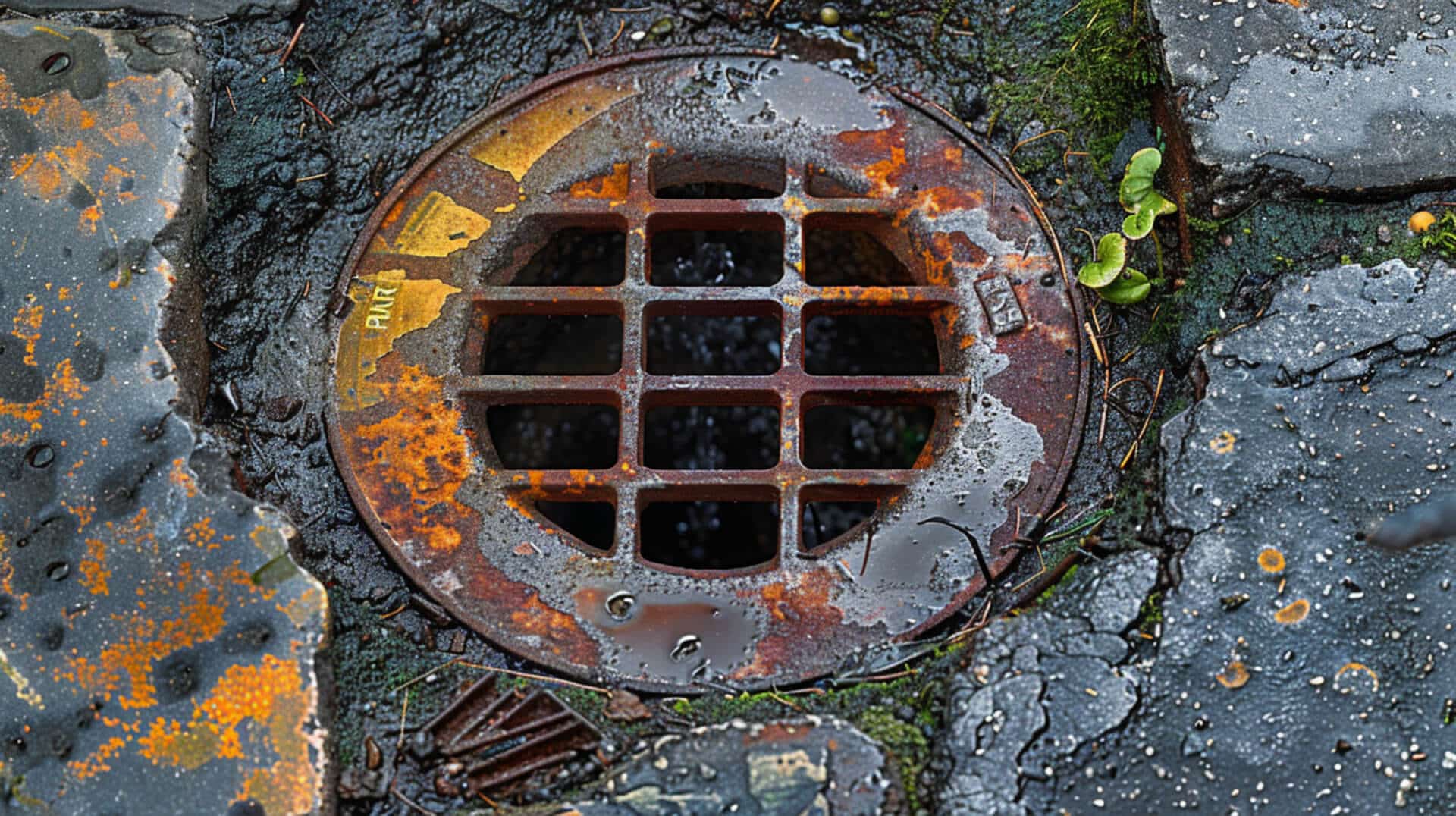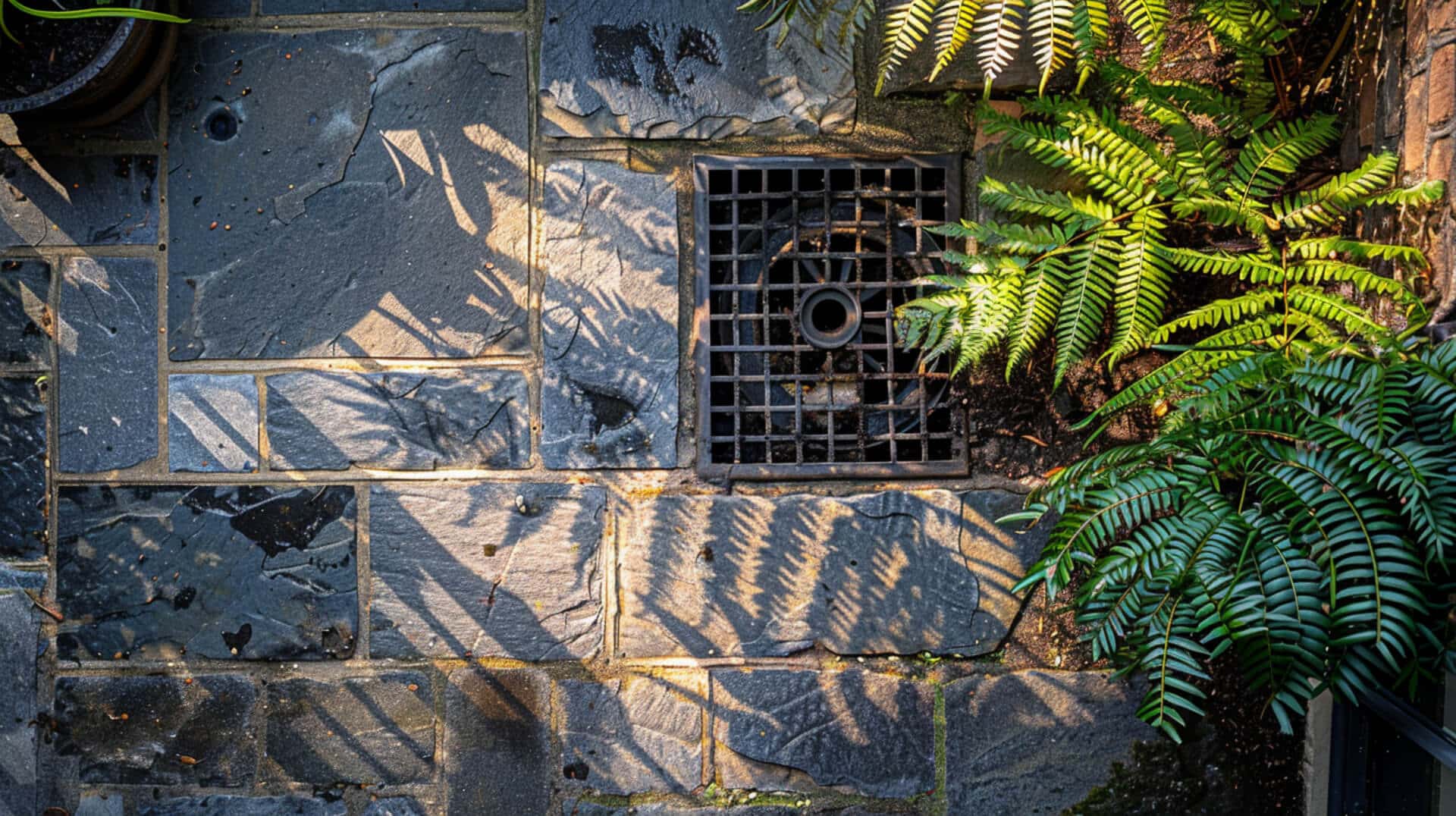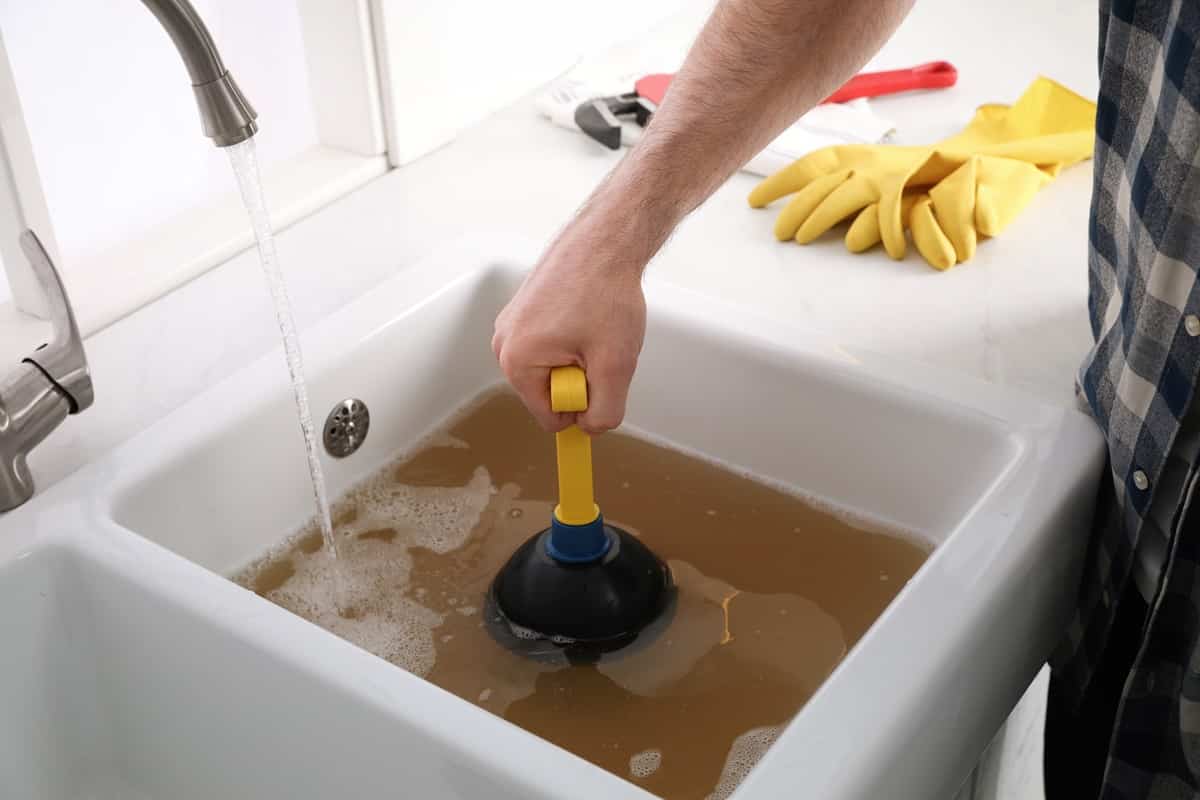 How Do Small Objects End Up Blocking Your Drains?
How Do Small Objects End Up Blocking Your Drains?
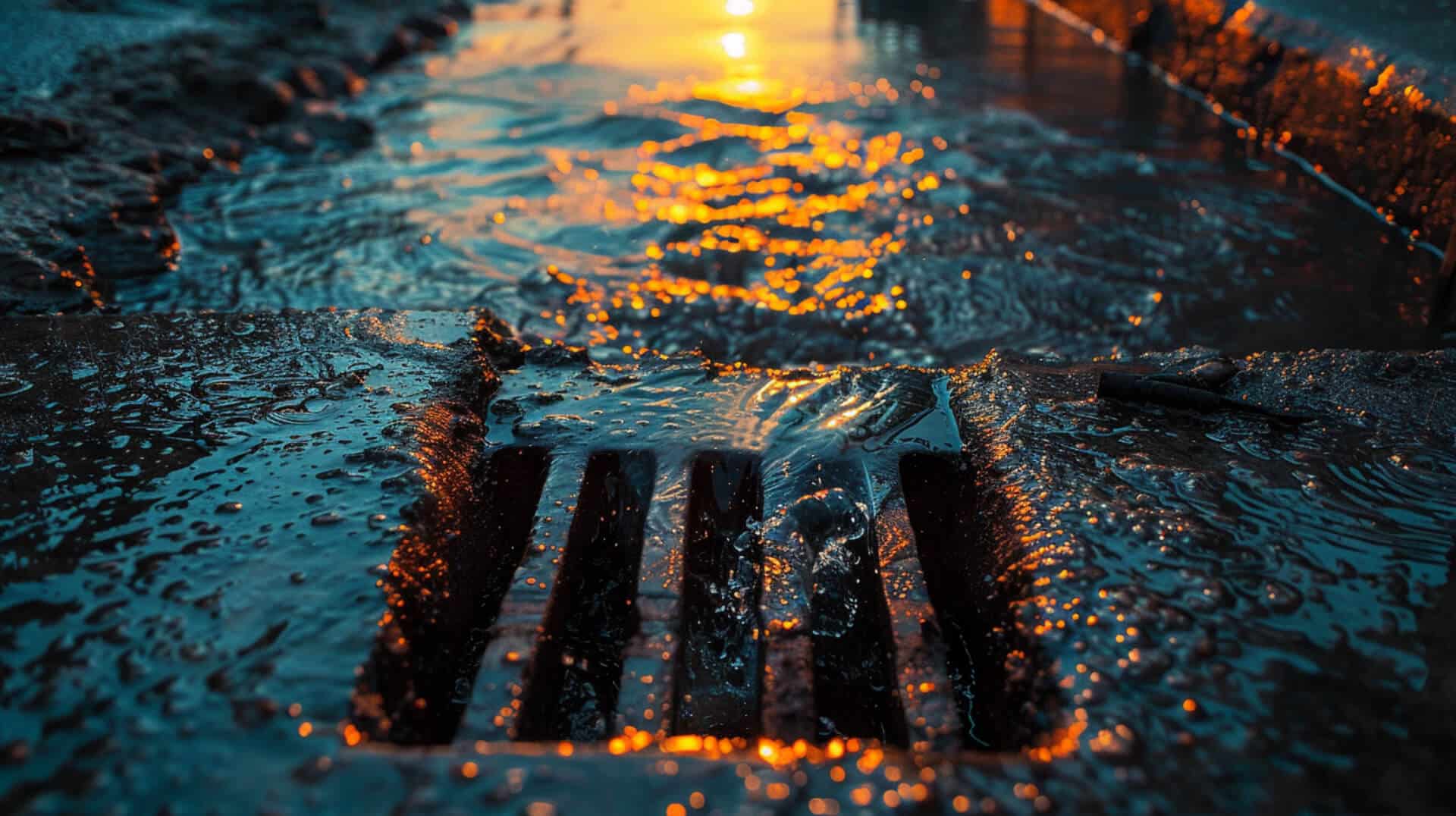
Common Causes of Blocked Drains – Small Objects
Blocked drains can be a significant inconvenience, often caused by small objects that inadvertently enter the drainage system. Understanding the common small objects that lead to blockages is crucial for effective prevention and maintenance.
Common Small Objects That Cause Drain Blockages
Small objects frequently responsible for drain blockages include:
- Toys: Children’s toys can easily be flushed or washed down drains.
- Jewellery: Items like rings and earrings often fall into sinks.
- Soap: Small soap pieces can accumulate and cause obstructions.
- Bathroom Items: Hairpins, cotton swabs, and other small toiletries.
- Food Particles: Rice, pasta, and other small food items can expand and block pipes.
- Paper Products: Paper towels and tissues can absorb water and expand, causing blockages.
Importance of Understanding These Causes
Recognising the types of small objects that cause blockages helps in implementing preventive measures. It allows property owners, business owners, and facility managers to take proactive steps to avoid potential drainage issues, reducing the risk of costly repairs and maintenance.
How Small Objects Enter Drainage Systems
Small objects typically enter drainage systems through:
- Accidental Flushing: Items like toys and jewellery can be accidentally flushed down toilets or washed down sinks.
- Improper Disposal: Small toiletries and food particles are often disposed of incorrectly, leading to blockages.
- Negligence: Lack of awareness or carelessness can result in small objects entering drains.
Guide Coverage
This guide will cover:
- Types of Small Objects That Cause Blockages: Detailed descriptions of common objects and their risks.
- Prevention Methods: Practical advice on preventing small object blockages.
- Signs of Blocked Drains: Symptoms to watch for indicating a blockage.
- Immediate Actions: Steps to take if a blockage is suspected.
- Tools and Devices: Recommended tools for removing small objects.
- Professional Services: When and why to seek professional help.
- Long-term Consequences: Potential impacts of ignoring blockages.
- Modern Technologies: Innovations in plumbing to prevent blockages.
- Maintenance Routines: Best practices for regular drain maintenance.
- Educational Tips: Resources for educating household members and staff.
By understanding these aspects, you can effectively manage and prevent blockages caused by small objects, ensuring a smoothly functioning drainage system.
Types of Small Objects That Cause Blockages
Understanding the types of small objects that commonly cause drain blockages is essential for effective prevention and management. These objects can vary widely, but they often share common characteristics that make them problematic.
Common Small Objects Leading to Blockages
- Toys: Small toys, especially those used during bath time, can easily be washed down drains.
- Jewellery: Rings, earrings, and other small pieces of jewellery can accidentally fall into sinks and become lodged in pipes.
- Soap: Small soap pieces can accumulate and create blockages, particularly when combined with other debris.
- Bathroom Items: Items such as hairpins, cotton swabs, and dental floss can cause significant blockages.
- Food Particles: Small food particles like rice and pasta can expand and block kitchen drains.
- Paper Products: Paper towels, tissues, and other paper products can absorb water and expand, leading to blockages.
How These Objects Enter Drains
- Accidental Dropping: Small items can be accidentally dropped into sinks or toilets.
- Improper Disposal: Items like paper towels and food particles are sometimes improperly disposed of in sinks or toilets.
- Children’s Play: Children may inadvertently flush toys or other small objects down the toilet.
Specific Risks Associated with Each Type of Object
- Toys: Can cause complete blockages and are often difficult to remove.
- Jewellery: Can become lodged in tight spaces, making removal challenging.
- Soap: Can combine with hair and other debris to form stubborn blockages.
- Bathroom Items: Can create dense blockages that impede water flow.
- Food Particles: Can expand and solidify, leading to persistent blockages.
- Paper Products: Can absorb water and expand, causing significant blockages.
Prevention Through Identification
Identifying these objects and understanding how they enter drains can help in developing effective prevention strategies. Using drain covers, educating household members, and proper disposal practices are key measures to prevent these blockages. Regular inspections and maintenance can also help in early detection and removal of potential blockages.
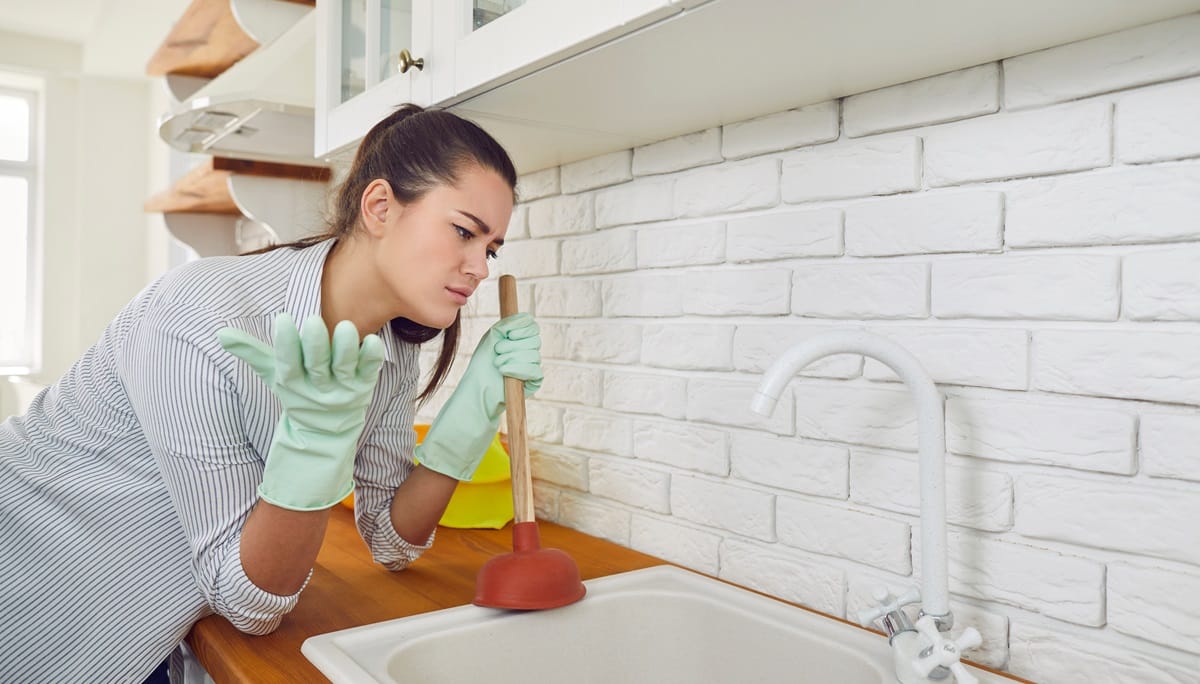
Prevention Methods for Small Object Blockages
Preventing small object blockages in drains requires a combination of practical measures and regular maintenance. Implementing these strategies can help avoid the inconvenience and potential damage caused by blockages.
Preventive Measures
- Use of Drain Covers and Strainers:
- Drain Covers: Installing drain covers can effectively prevent small objects from entering the drainage system. These covers act as a barrier, catching items before they can cause blockages.
- Strainers: Sink strainers are particularly useful in kitchens and bathrooms. They catch food particles, hair, and other small items, preventing them from going down the drain.
- Proper Disposal Practices:
- Educating Household Members: Ensuring that everyone in the household understands what should and should not be disposed of in sinks and toilets is crucial. Items like toys, jewellery, and small bathroom items should be kept away from drains.
- Disposal of Food Particles: food waste should be disposed of in compost bins or trash cans, not washed down the sink.
Effectiveness of Drain Covers and Strainers
Drain covers and strainers are highly effective in preventing blockages caused by small objects. They provide a physical barrier that stops items from entering the drainage system, significantly reducing the risk of blockages.
Role of Education in Prevention
Educating household members about proper disposal practices is essential. Awareness campaigns and regular reminders can help ensure that everyone follows the guidelines, reducing the likelihood of blockages.
Review and Update of Preventive Measures
Preventive measures should be reviewed and updated regularly. This includes checking the condition of drain covers and strainers, ensuring they are not damaged or clogged. Regular maintenance and inspections can help identify potential issues before they become serious problems.
By implementing these preventive measures, property owners can effectively reduce the risk of small object blockages in their drainage systems.
Signs of Blocked Drains Due to Small Objects
Identifying the early signs of blocked drains caused by small objects is crucial for timely intervention and prevention of further issues. Recognising these signs can help property owners take appropriate action before the problem escalates.
Early Signs of Blockage
- Slow Draining Water: Water taking longer than usual to drain from sinks, bathtubs, or showers can indicate a blockage.
- Unpleasant Odours: Foul smells emanating from drains often suggest trapped debris, including small objects.
- Gurgling Sounds: Unusual noises, such as gurgling, can signal that water is struggling to pass through a partially blocked drain.
- Water Backups: Water backing up into sinks, bathtubs, or toilets is a clear sign of a significant blockage.
Detection Methods for Property Owners
- Visual Inspection: Regularly check drains for visible signs of blockages, such as accumulated debris or slow drainage.
- Listening for Sounds: Pay attention to any unusual sounds coming from drains, which can indicate a blockage.
- Odour Monitoring: Be aware of any persistent unpleasant odours around drains, as this can be a sign of trapped debris.
Potential Consequences of Ignoring Signs
- Pipe Damage: Persistent blockages can lead to increased pressure within pipes, causing damage or even bursts.
- Increased Repair Costs: Delaying intervention can result in more severe blockages, leading to higher repair costs.
- Health Hazards: Stagnant water due to blockages can become a breeding ground for bacteria and mould, posing health risks.
Importance of Regular Inspections
Regular inspections can help in early detection of blockages caused by small objects. By identifying and addressing issues promptly, property owners can prevent more severe problems and maintain the efficiency of their drainage systems. Regular maintenance and monitoring are key to ensuring that drains remain clear and functional.
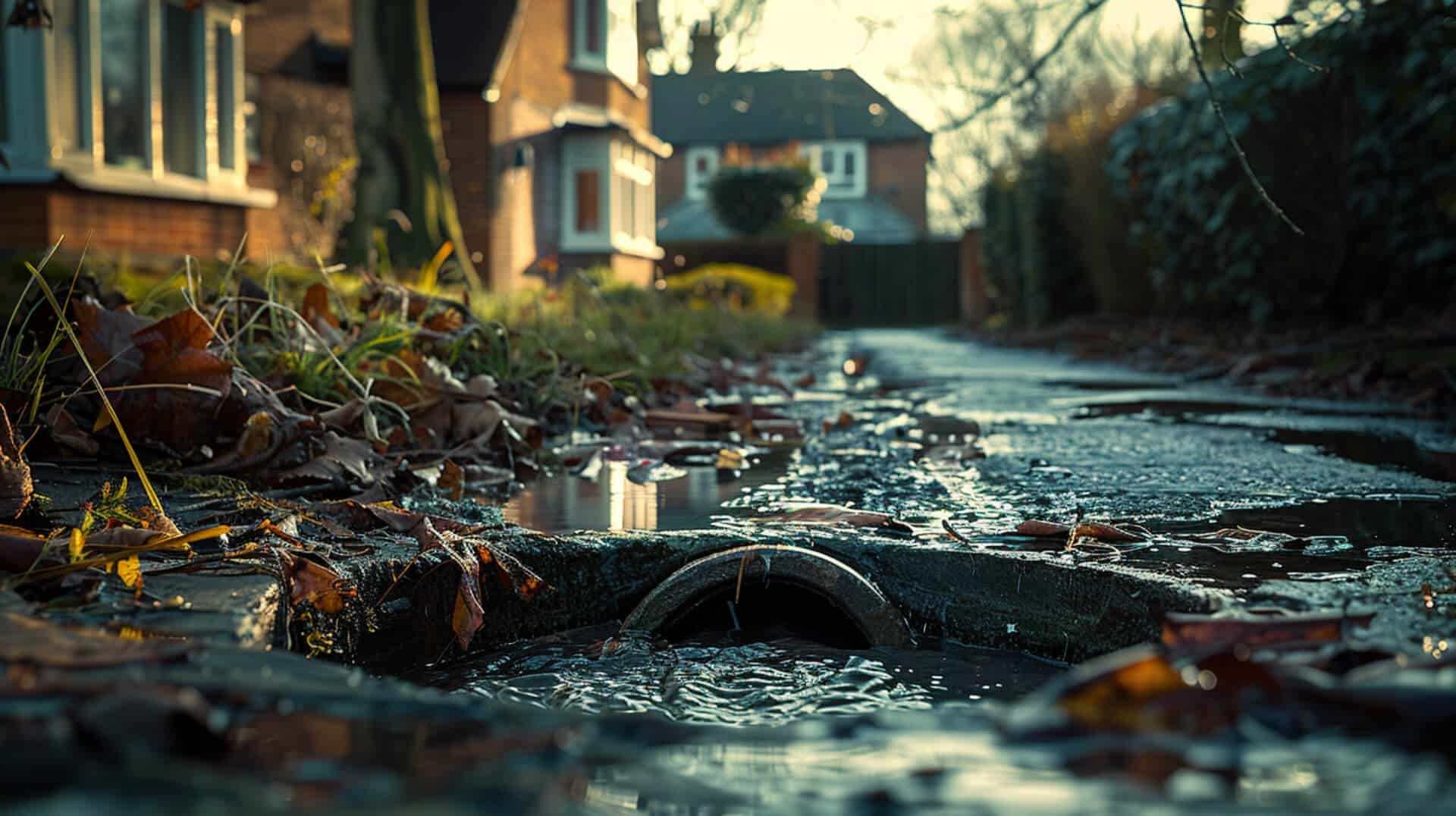
Immediate Actions for Suspected Blockages
When a blockage is suspected, taking immediate action can prevent further complications and potential damage to the drainage system. Here are the steps to follow:
Steps to Take Immediately
- Stop Using the Affected Drain: Cease using the drain to prevent water from backing up and causing further issues.
- Identify the Blockage Location: Determine which drain is blocked and assess the severity of the blockage.
Safe Manual Removal of Objects
- Use Protective Gear: Wear gloves to protect your hands from debris and potential contaminants.
- Remove Visible Objects: If the object causing the blockage is visible, carefully remove it using your hands or a tool.
Recommended Tools for Immediate Action
- Plunger: A plunger can create suction to dislodge the blockage. Ensure a tight seal around the drain and use firm, consistent pressure.
- Drain Snake: A drain snake, or auger, can reach deeper blockages. Insert the snake into the drain and rotate it to break up or retrieve the blockage.
- Pliers or Hooks: For objects close to the drain opening, pliers or hooks can be used to grasp and remove the blockage.
When to Seek Professional Help
- Persistent Blockages: If the blockage cannot be removed with manual methods or tools, professional assistance is necessary.
- Suspected Pipe Damage: If there are signs of pipe damage, such as leaks or cracks, contact a professional immediately.
- Recurring Issues: Frequent blockages may indicate a more serious underlying problem that requires professional evaluation.
By following these steps, property owners can address blockages promptly and effectively, minimising the risk of further damage and ensuring the proper functioning of their drainage systems.
Tools and Devices for Removing Small Objects
Effectively removing small objects from drains requires the right tools and techniques. Using appropriate tools can help clear blockages without causing damage to the drainage system.
Effective Tools for Removing Small Objects
- Plungers:
- Usage: Create suction to dislodge blockages. Ensure a tight seal around the drain and use firm, consistent pressure.
- Application: Suitable for sinks, bathtubs, and toilets.
- Drain Snakes (Augers):
- Usage: Insert into the drain and rotate to break up or retrieve blockages.
- Application: Effective for deeper blockages in pipes.
- Pliers and Hooks:
- Usage: Grasp and remove objects close to the drain opening.
- Application: Ideal for visible blockages near the surface.
- Drain Guards and Strainers:
- Usage: Prevent small objects from entering the drain.
- Application: Use in sinks and bathtubs to catch debris.
Proper Use to Avoid Damage
- Gentle Handling: Avoid using excessive force to prevent damage to pipes.
- Correct Tool Selection: Use tools appropriate for the type and location of the blockage.
- Regular Maintenance: Clean and inspect tools regularly to ensure they are in good condition.
Limitations of DIY Tools and Devices
- Depth of Blockage: DIY tools may not reach deep blockages.
- Complex Blockages: Some blockages may require specialised equipment or techniques.
- Potential for Damage: Improper use of tools can damage pipes or fixtures.
When to Use Professional-Grade Equipment
- Persistent Blockages: If DIY methods fail to clear the blockage.
- Suspected Pipe Damage: When there are signs of leaks or cracks.
- Complex Blockages: For blockages that are difficult to reach or remove.
Using the right tools and techniques can effectively address small object blockages, ensuring the proper functioning of the drainage system.
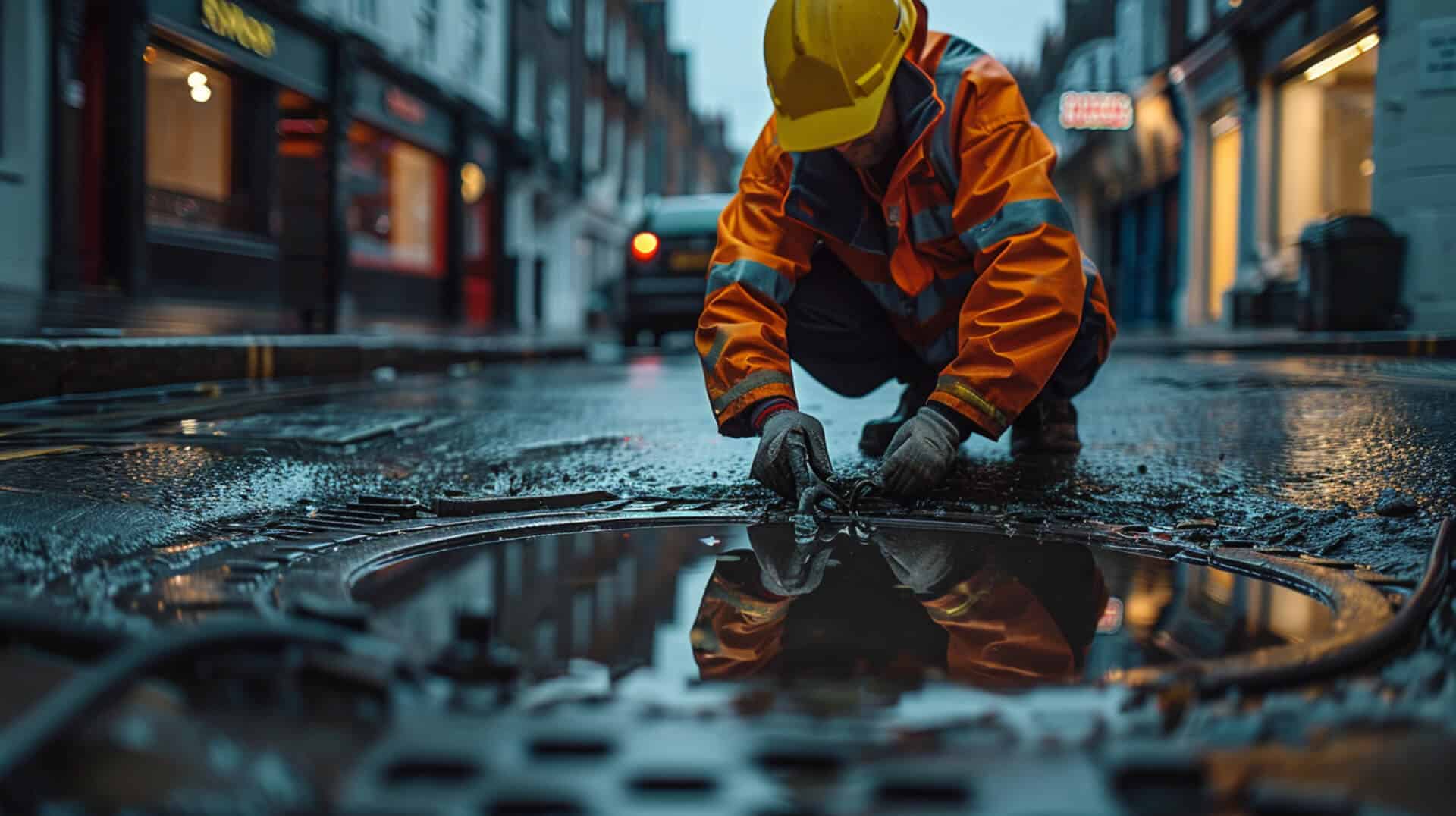
Professional Services for Small Object Blockages
When dealing with small object blockages, professional services offer specialised expertise and equipment to ensure effective resolution. Understanding the available services and their benefits can help property owners make informed decisions.
Available Professional Services
- Drain Inspection and Cleaning:
- Inspection: Professionals use advanced tools like CCTV cameras to inspect the inside of pipes and identify blockages.
- Cleaning: High-pressure water jetting and other techniques are used to clear blockages and clean the pipes.
- High-Pressure Water Jetting:
- Usage: This method uses high-pressure water to dislodge and remove blockages.
- Application: Effective for clearing stubborn blockages caused by small objects and debris.
- CCTV Drain Surveys:
- Usage: A camera is inserted into the drain to provide a visual inspection of the blockage.
- Application: Helps in accurately identifying the location and nature of the blockage.
- Emergency Call-Out Services:
- Availability: Many professionals offer 24/7 emergency services to address urgent blockages.
- Response: Quick response times to prevent further damage and inconvenience.
Handling of Blockages by Professionals
- Assessment: Initial assessment to determine the cause and location of the blockage.
- Removal: Use of specialised tools and techniques to remove the blockage without damaging the pipes.
- Prevention: Recommendations for preventing future blockages, such as installing drain covers or regular maintenance.
Benefits of Hiring a Professional Service
- Expertise: Professionals have the knowledge and experience to handle various types of blockages effectively.
- Equipment: Access to advanced tools and technology that are not typically available to homeowners.
- Efficiency: Faster and more efficient resolution of blockages, minimising disruption and potential damage.
What to Expect During a Professional Service Visit
- Initial Consultation: Discussion of the issue and initial assessment.
- Inspection: Use of tools like CCTV cameras to inspect the drain.
- Blockage Removal: Application of appropriate techniques to remove the blockage.
- Post-Service Recommendations: Advice on preventive measures and maintenance to avoid future blockages.
By utilising professional services, property owners can ensure that small object blockages are addressed effectively and efficiently, maintaining the proper functioning of their drainage systems.
Long-term Consequences of Ignoring Blockages
Ignoring blockages caused by small objects can lead to significant long-term issues. Understanding these potential consequences is crucial for maintaining a functional drainage system.
Potential Long-term Effects
- Pipe Damage:
- Increased Pressure: Persistent blockages can cause increased pressure within pipes, leading to cracks or bursts.
- Corrosion: Blockages can contribute to corrosion, weakening the structural integrity of pipes.
- Severe Drainage Issues:
- Recurring Blockages: Ignored blockages can lead to more frequent and severe blockages over time.
- Water Backups: Persistent blockages can cause water to back up into sinks, bathtubs, and toilets, leading to potential flooding.
- Health Hazards:
- Stagnant Water: Blockages can cause water to stagnate, creating a breeding ground for bacteria and mould.
- Unpleasant Odours: Accumulated debris can produce foul odours, affecting indoor air quality.
Financial Implications
- Increased Repair Costs: Delaying intervention can result in more extensive damage, leading to higher repair costs.
- Property Damage: Water backups and flooding can cause significant damage to property, requiring costly repairs and restoration.
Prevention Through Regular Maintenance
- Routine Inspections:
- Early Detection: Regular inspections can help identify and address blockages before they become severe.
- Preventive Measures: Implementing preventive measures, such as using drain covers and educating household members, can reduce the risk of blockages.
- Professional Services:
- Regular Cleaning: Scheduling regular professional cleaning can help maintain clear drains and prevent blockages.
- Maintenance Plans: Engaging professional services for routine maintenance can ensure the long-term health of the drainage system.
By understanding and addressing the long-term consequences of ignoring blockages, property owners can take proactive steps to maintain their drainage systems and avoid costly repairs.
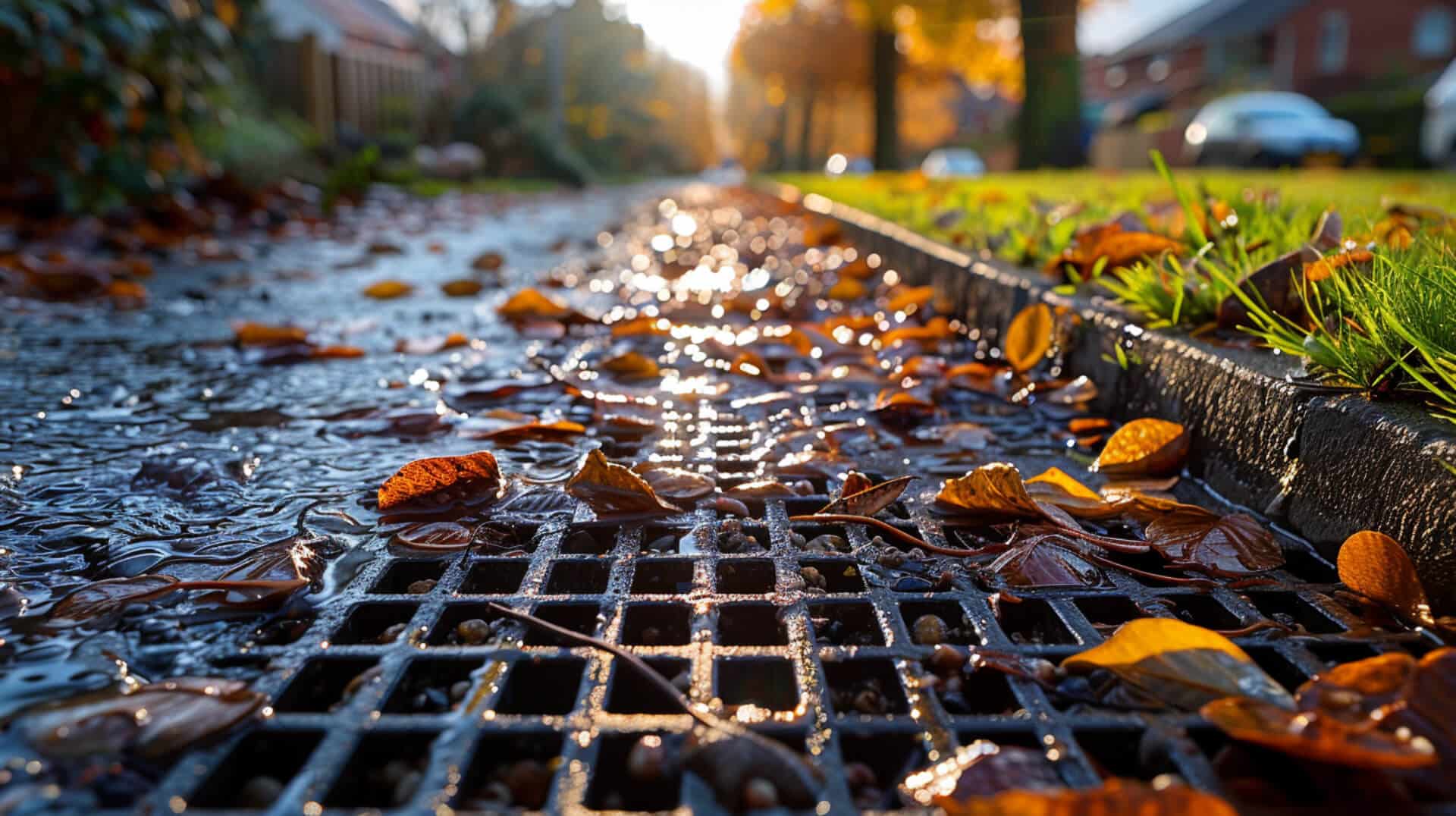
Modern Plumbing Technologies for Prevention
Modern plumbing technologies offer innovative solutions to prevent small object blockages in drainage systems. These advancements enhance the efficiency and reliability of plumbing systems, reducing the risk of blockages.
Available Modern Technologies
- Smart Drain Systems:
- Functionality: Smart drain systems use sensors and automated mechanisms to detect and prevent blockages. These systems can alert property owners to potential issues before they become severe.
- Advantages: Early detection and automated responses help maintain clear drains and reduce the need for manual intervention.
- Advanced Materials for Pipes:
- Materials: Modern pipes are made from advanced materials such as PVC, PEX, and HDPE, which are more resistant to corrosion and blockages.
- Benefits: These materials offer improved durability, flexibility, and resistance to chemical buildup, reducing the likelihood of blockages.
Integration of Technologies
- Installation of Smart Drain Systems:
- Process: Smart drain systems can be integrated into existing plumbing systems. Professional installation ensures proper setup and functionality.
- Maintenance: Regular maintenance and monitoring are required to ensure the system operates effectively.
- Upgrading to Advanced Materials:
- Replacement: Replacing old pipes with modern materials can significantly reduce the risk of blockages. This process may involve a complete overhaul of the plumbing system.
- Professional Services: Engaging professional services for installation and maintenance ensures the longevity and efficiency of the new materials.
Advantages of Modern Technologies
- Efficiency: Modern technologies enhance the overall efficiency of plumbing systems, reducing the frequency and severity of blockages.
- Durability: Advanced materials and smart systems offer greater durability and longevity, minimising the need for frequent repairs.
- Cost-Effectiveness: Investing in modern technologies can lead to long-term cost savings by reducing maintenance and repair expenses.
By integrating modern plumbing technologies, property owners can effectively prevent small object blockages and maintain the efficiency of their drainage systems.
Maintenance Routines to Prevent Blockages
Regular maintenance routines are essential for preventing blockages caused by small objects in drainage systems. Implementing best practices can help ensure the longevity and efficiency of the plumbing system.
Best Practices for Maintaining Drains
- Regular Inspections:
- Visual Checks: Regularly inspect drains for visible signs of blockages or slow drainage.
- Professional Inspections: Schedule periodic professional inspections to identify potential issues early.
- Use of Drain Covers and Strainers:
- Installation: Instal drain covers and strainers to catch small objects before they enter the drainage system.
- Maintenance: Clean and inspect these devices regularly to ensure they are functioning correctly.
- Proper Disposal Practices:
- Education: Educate household members on what should and should not be disposed of in sinks and toilets.
- Disposal Methods: Use compost bins or trash cans for food waste and other small objects.
Frequency of Maintenance Routines
- Weekly: Perform visual checks and clean drain covers and strainers.
- Monthly: Conduct more thorough inspections and use natural cleaners like baking soda and vinegar to maintain clear drains.
- Annually: Schedule professional inspections and cleaning services to ensure the drainage system is in good condition.
Specific Tasks in a Maintenance Routine
- Cleaning:
- Natural Cleaners: Use baking soda and vinegar to clean drains and prevent buildup.
- Manual Removal: Remove any visible debris from drain covers and strainers.
- Inspection:
- Visual Checks: Look for signs of slow drainage, unpleasant odours, or gurgling sounds.
- Professional Services: Engage professionals for detailed inspections and cleaning.
- Education:
- Awareness: Regularly remind household members of proper disposal practices.
- Training: Provide training on how to use and maintain drain covers and strainers.
Ensuring Compliance with Maintenance Schedules
- Set Reminders: Use calendar reminders or maintenance logs to keep track of routine tasks.
- Professional Plans: Consider enrolling in a professional maintenance plan that includes regular inspections and cleaning services.
- Documentation: Keep records of all maintenance activities to ensure compliance and track the effectiveness of preventive measures.
By following these maintenance routines, property owners can effectively prevent blockages caused by small objects and maintain the efficiency of their drainage systems.
Educational Tips for Staff and Household Members
Educating staff and household members on preventing small object blockages is essential for maintaining a functional drainage system. Proper education can significantly reduce the risk of blockages and ensure long-term efficiency.
Educational Tips to Prevent Small Object Blockages
- Proper Disposal Practices:
- Avoid Flushing Non-Flushable Items: Educate everyone to dispose of items like paper towels, sanitary products, and small toys in the trash, not the toilet.
- Food Waste Management: Encourage composting or trash disposal of food particles instead of washing them down the sink.
- Use of Drain Covers and Strainers:
- Installation: Ensure that drain covers and strainers are installed in sinks and bathtubs to catch small objects.
- Maintenance: Regularly clean and inspect these devices to ensure they are functioning correctly.
Educating Staff and Household Members
- Awareness Campaigns: Conduct regular awareness campaigns to inform everyone about the importance of proper disposal practices.
- Training Sessions: Organise training sessions to demonstrate how to use and maintain drain covers and strainers.
Available Materials and Resources
- Instructional Guides: Provide printed or digital guides that outline proper disposal practices and maintenance routines.
- Visual Aids: Use posters and infographics to visually communicate the do’s and don’ts of drain usage.
- Online Resources: Share links to online resources and videos that offer tips and best practices for preventing blockages.
Contribution of Ongoing Education to Long-term Prevention
- Regular Reminders: Send periodic reminders to reinforce proper practices and prevent complacency.
- Feedback Mechanism: Implement a feedback mechanism to address any questions or concerns and continuously improve educational efforts.
- Monitoring and Evaluation: Regularly evaluate the effectiveness of educational programmes and make necessary adjustments.
By implementing these educational tips and resources, property owners can effectively prevent small object blockages and maintain the efficiency of their drainage systems.
Final Thoughts on Preventing Small Object Blockages
Preventing small object blockages in drainage systems requires a combination of practical strategies and regular maintenance. By understanding the key takeaways from this guide, property owners can implement effective measures to maintain clear and functional drains.
Key Takeaways
- Identification of Common Small Objects:
- Recognise items such as toys, jewellery, soap, small bathroom items, food particles, and paper products that commonly cause blockages.
- Prevention Methods:
- Use drain covers and strainers to catch small objects.
- Educate household members on proper disposal practices.
- Regularly inspect and maintain drains to prevent blockages.
- Signs of Blocked Drains:
- Be aware of slow draining water, unpleasant odours, gurgling sounds, and water backups as indicators of blockages.
- Immediate Actions:
- Stop using the affected drain and attempt manual removal of visible objects.
- Use tools like plungers, drain snakes, and pliers for immediate action.
- Seek professional help for persistent or complex blockages.
- Professional Services:
- Utilise services such as drain inspection, high-pressure water jetting, and CCTV drain surveys for effective blockage removal and prevention.
- Long-term Consequences:
- Understand the potential for pipe damage, severe drainage issues, health hazards, and increased repair costs if blockages are ignored.
- Modern Plumbing Technologies:
- Consider integrating smart drain systems and advanced materials for pipes to enhance prevention efforts.
- Maintenance Routines:
- Implement regular cleaning, inspection, and education routines to maintain clear drains.
Implementation of Strategies
- Regular Inspections: Schedule routine inspections to identify and address potential blockages early.
- Education: Continuously educate household members on proper disposal practices and the importance of using drain covers and strainers.
- Professional Services: Engage professional services for regular maintenance and to handle complex blockages.
Benefits of Proactive Prevention and Maintenance
- Cost Savings: Preventive measures and regular maintenance can reduce the need for costly repairs.
- System Efficiency: Maintaining clear drains ensures the efficient functioning of the drainage system.
- Health and Safety: Preventing blockages reduces the risk of health hazards associated with stagnant water and unpleasant odours.
Staying Informed About New Prevention Methods
- Research and Updates: Stay informed about new technologies and methods for preventing blockages.
- Professional Advice: Consult with professionals to learn about the latest advancements in plumbing technology and maintenance practices.
By implementing these strategies, property owners can effectively prevent small object blockages and maintain the efficiency of their drainage systems.
